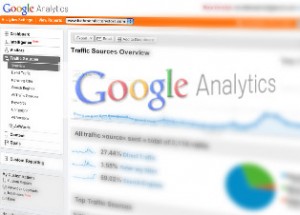POSTED BY: David Jordan
Search Engine Optimisation (or There’s no point in being online if your audience can’t find you) Part 1
Four years ago I wrote an article for a magazine about the basics of search engine optimistation. I stumbled on the text again recently and was surprised to see how much is still relevant, at least in terms of the basic principles, so relevant I thought it worth revisiting for a blog post.
I have updated some elements of the text – I don’t think there’s a need to explain to this audience what a blog is – and will break it down into a series of posts, with a follow up on the evolution of search in the context of social media.
——
Search Engine Optimisation
 So you have just launched a great new website that provides lots of information all about your company and services, but what now? Unfortunately no matter how much work you’ve put into the site it will be of little value if no one can find it or even knows it exists. Added to that is the need to ensure you are attracting the right audience for your business.
So you have just launched a great new website that provides lots of information all about your company and services, but what now? Unfortunately no matter how much work you’ve put into the site it will be of little value if no one can find it or even knows it exists. Added to that is the need to ensure you are attracting the right audience for your business.
Welcome the the whole murky world of Search Engine Optimisation, Optimisation is the principle of tailoring your site so that it appears as high as possible in search engine results.
It’s best described as murky because although there are principles that guide how your site can be optimised, there are no hard or fast rules that guarantee that your site will appear at the top of a search results page. Instead there is an esoteric process, much of which is best left to your web developer, that includes a combination of building the underlying structure of the sit, editing the wording of text appearing on the site, editing page titles, adding hidden ‘meta’ descriptions, and getting lots links to it. Although the majority of search engine traffic come from Google it is still useful to aware that other search engines use their own algorithms which weights all these elements to provide their own rank for a site and therefore a similar search on different search engines will not only provide results in a different order but a site might appear on the first page of one search engine and a much lower page of another.
The best time to carry out the initial optimisation is as the site is being built. However if you already have a site there’s still a lot you can do to improve its profile, indeed maintaining and improving site ranking is a vital ongoing process. Your competitors are constantly updating their sites and search engine algorithms are also being regularly upgraded so if you do nothing, your search engine results will suffer over time.
As part of the optimisation process think about the kinds of search phrases and words the people you want to find your site are likely to use and include those keywords in the first paragraph of your homepage. They should also appear in the page headings and even in the filenames of other pages in your site. Included in the code that makes up a web page are tags that include a title, page description and alternative descriptions for images. Those elements should also include your keywords and likely search phrases consistent with the keywords appearing on the page and headings. For different areas of your business or services you offer you can hone different pages on your site with their own set of descriptions and keywords.
You may be selling high end jewellery but if you audience is searching for ‘cheap necklaces’ and finding your competitors’ sites and not yours, then you may have to reappraise your search terms.
Your web developer or specialist consultant should know how to carry out the optimization but they don’t know your business or customer base as well as you do.
Your input it vital in identifying your customers and the search phrases they use.
——–
Watch out for part two, coming soon.
Keep Reading

Google: Now Search by Image & Voice

Facebook Insights Guide

Klout Earns You Facebook Freebies!

How Google+ Can Succeed: Privacy, Mobile & No...

Facebook Credits: Moving Towards F Commerce?

Add Your Facebook Friends & Photos to Google+

What do we Think of Facebook Commerce?

Infographic: The Internet of Things

Facebook Video Vs Youtube: Which is Best?

Facebook: Average Irish User 30.5 Years

Office Flood…

Think Irish

We’re Back!

We’re opening the doors!

Breaking Brands Bash

From Bordeaux to Harold’s Cross

We’re Hiring!

Raglan Road, hot off the press!

We’re Hiring… Again!
